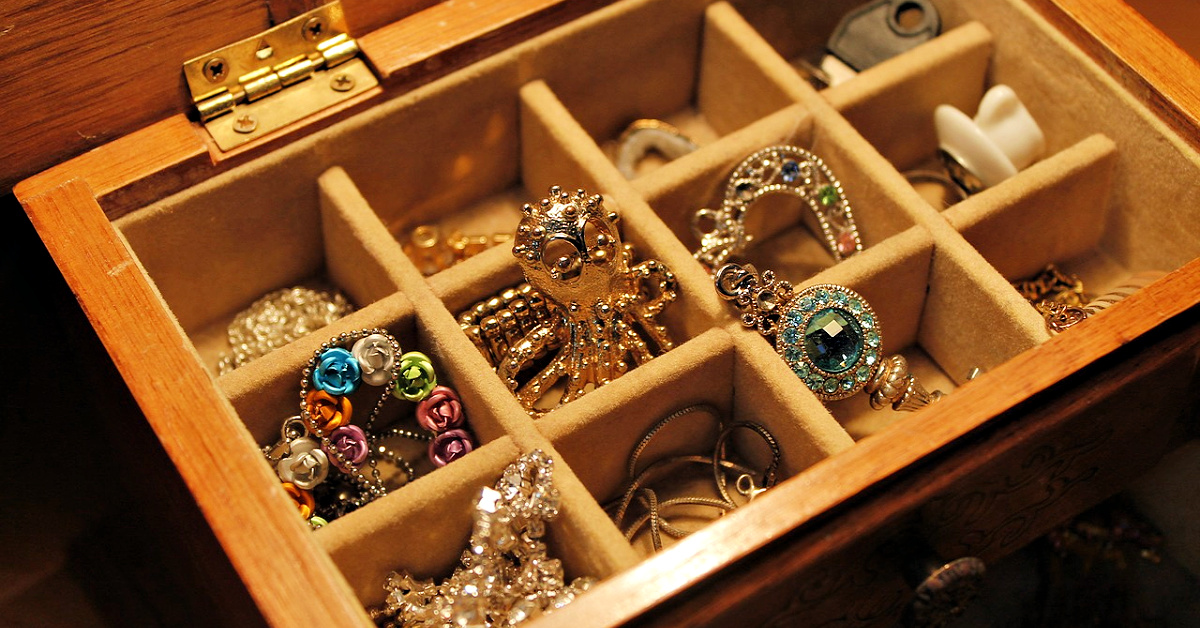When it comes to jewelry, there’s plenty to choose from.
There’s fashion jewelry, for example, which is generally characterized by ephemeral pieces made of materials that barely outlast their trends, like brass, copper or aluminum. But the growing popularity of secondhand marketplace apps like Thredup and Poshmark are making fast-fashion—and jewelry—uncool.
Now, more and more jewelry shoppers are looking for high-quality materials and superior craftsmanship. They want pieces with a meaningful story—and all at a reasonable price.
If you’re on the hunt for an authentic cameo or a vintage Gucci Horsebit bracelet but don’t want to break the bank, estate shopping may be up your alley. There are plenty of other reasons to shop for estate jewelry, including:
Uniqueness – You may find some distinctive vintage pieces that don’t look like anything for sale in current retail stores.
History – You’ll likely uncover some pieces with interesting backgrounds. Look for personal engravings on rings or small surprises in lockets.
Quality – Craftsmanship doesn’t come cheap. But an estate piece will likely be more affordable than if you bought the same item new, like if you’re lucky enough to land a vintage Tiffany East West watch.
Interested in buying some estate jewelry? Here are some tips to get you started:
Understand Jewelry Terminology
First, it’s important to understand the difference between estate jewelry, vintage jewelry and antique jewelry.
Estate jewelry refers to any second-hand jewelry. Estate jewelry can be fashion jewelry, for example, and it can also include antiques. All it really means is the items are pre-owned.
Vintage jewelry, meanwhile, is jewelry that is at least 20 to 30 years old—basically anything after 1990. Provided they aren’t replicas, chunky Lucite rings and gummy bear necklaces would all be considered vintage.
To be considered an antique, however, jewelry must be at least 100 years old. An Edwardian pink topaz ring, circa 1900, is a definite antique.
Where to Buy Estate Jewelry
The most traditional way to buy estate jewelry is through estate sales (also referred to as a tag sale). There, you’ll find items listed for sale with a price tag—and a little bit of room for haggling. The downside of estate sales is that the most in-demand pieces are usually snatched up before they open to the public. It’s also hard to appraise jewelry on the spot and know if the price is fair if you’re not an expert.
Buying estate jewelry at physical auctions also has its pros and cons. While items are vetted and information about each piece is available prior to bidding, it’s easy to get swept up in a bidding war and overpay for something.
You can also shop for estate jewelry right from your couch, thanks to eBay. Just beware of scams. Carefully vet sellers and make sure their ratings are legitimate. Are the items one-of-a-kind, or do you spot multiple items with the same design? Don’t fall for replicas and beware of language like “antique-style.”
One of the easiest (and safest) ways to shop for estate jewelry is through specialized jewelers. Most are licensed buyers and often buy items directly from customers over-the-counter. They generally have a great deal of knowledge about their items, including when it was made.
Picking the Right Piece
While some jewelry appreciates in value, don’t buy items solely for investment purposes. Precious metals and stones are subject to price fluctuation. Instead, pick pieces you love, will get use out of, and are within your budget. If they do appreciate in value, consider it a bonus.












